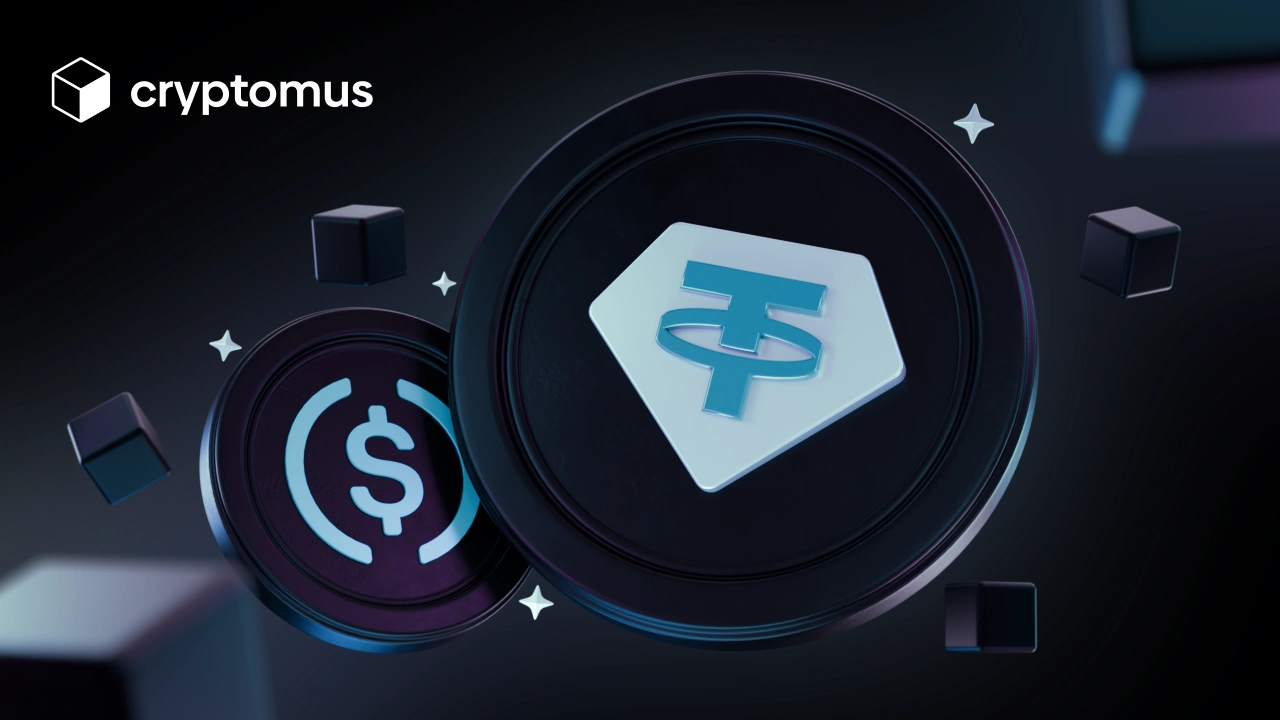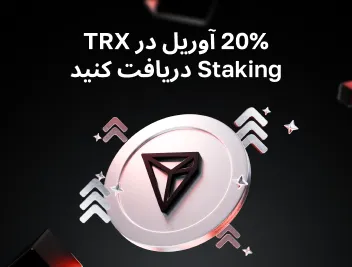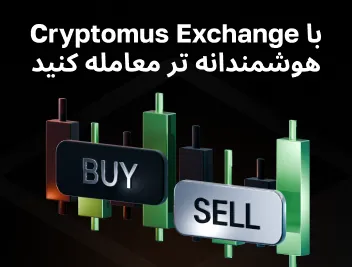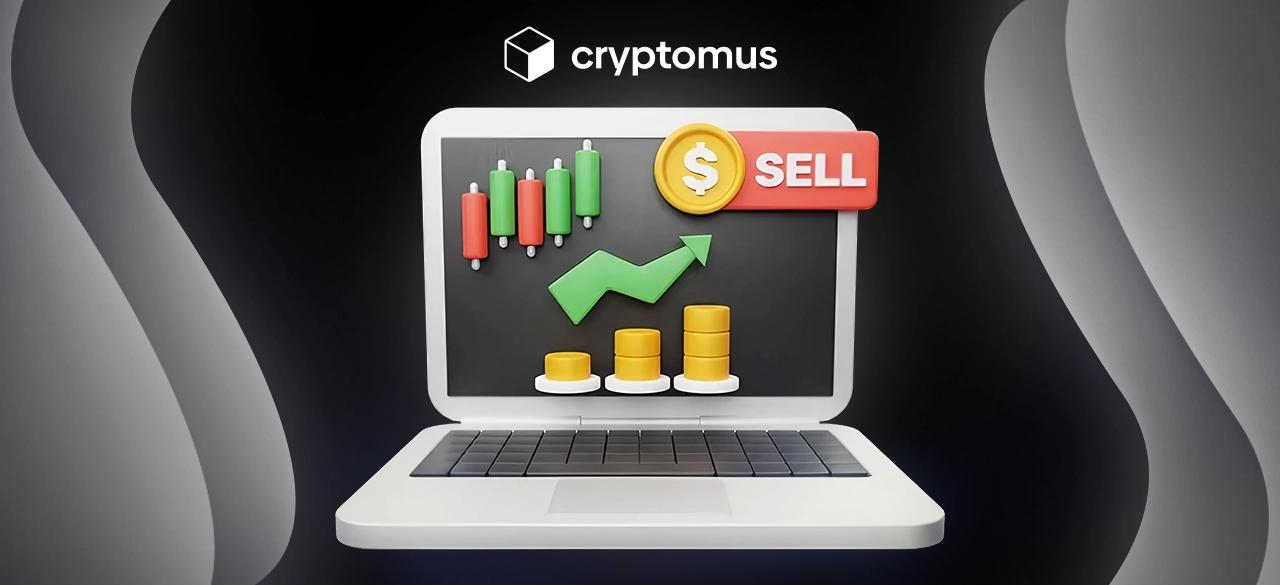
USDT در مقابل USD: تفاوتهای کلیدی
دلار آمریکا و تتر - تفاوت بین این دو ارز چیست، برای چه مواردی استفاده میشوند و نرخ تبدیل آنها به چه چیزی بستگی دارد؟ بیایید در این مقاله به این موضوع بپردازیم.
دلار آمریکا چیست؟
دلار آمریکا یا دلار ایالات متحده، ارز پذیرفته شده برای ایالات متحده و ارز رسمی جهان است. بیشتر ذخایر آن توسط دولتهای خارجی در مقادیر بسیار قابل توجهی نگهداری میشود و بیشتر معاملات بینالمللی با پول صادر شده توسط فدرال رزرو انجام میشود، بنابراین این ارز یکی از نقدشوندهترین ارزها در جهان است. به عنوان یک ارز فیات، دلار آمریکا توسط یک کالای فیزیکی ارزشگذاری نمیشود، بلکه در عوض، توسط دولت پشتیبانی میشود.
تتر چیست؟
تتر (USDT) مخفف تتر (Tether) است که به این معنی یک استیبل کوین (Stablecoin) محسوب میشود که به دلار وابسته است تا تغییرات شدید قیمت را متحمل نشود. این ارز دیجیتال به گونهای ساخته شده است که مانند دلار آمریکا پایدار باشد، در حالی که از فناوری بلاک چین (blockchain) مشابه سایر ارزهای دیجیتال استفاده میکند.
در واقع، تتر رایجترین استیبل کوین مورد استفاده در معاملات و تراکنشهای بازار است تا از تحت تأثیر قرار گرفتن توسط نرخ نوسانات بسیار بالا، که از ویژگیهای اکثر ارزهای دیجیتال است، جلوگیری شود. بنابراین، تتر (USDT) به گونهای طراحی شده است که یک دارایی دیجیتال قابل اعتماد و به راحتی قابل انتقال با نوسانات قیمت محدود باشد.
چرا مردم به جای دلار آمریکا از تتر (USDT) استفاده میکنند؟
مهمترین تفاوت بین USD و USDT این است که USD یک ارز فیزیکی است که توسط دولت ایالات متحده صادر و پشتیبانی میشود، در حالی که USDT یک دارایی دیجیتال رمزنگاری شده است. اگرچه USDT تحت حمایت دولت نیست، اما توسط مقدار مساوی از USD که توسط شرکت بومی آن، Tether Limited، ذخیره شده است، پشتیبانی میشود.
مردم به دلایل مختلف از USDT به جای USD استفاده میکنند:
-
سهولت استفاده در بازارهای رمزنگاری.
-
ثبات و نقدینگی.
-
دسترسی جهانی.
-
حریم خصوصی و ناشناس بودن.
بیایید نگاهی دقیقتر به این گزینهها بیندازیم:
-
تتر را میتوان تقریباً در هر صرافی ارز دیجیتال به عنوان یک دارایی معاملاتی پایدار استفاده کرد، پس از آن کاربر میتواند وجوه را بین ارزهای دیجیتال مختلف بدون تبدیل به پول فیات سنتی جابجا کند. از این نظر، معاملات کارآمدتر است و مستعد از دست دادن ارزش به دلیل هرگونه هزینه مبادله یا تأخیر نیست.
-
تتر (USDT) با ارزشی به اندازه کافی پایدار نسبت به دلار آمریکا نگهداری میشود و به کاربران یک ذخیره ارزش قابل اعتماد برای یک بازار بسیار بیثبات ارزهای دیجیتال ارائه میدهد، از این رو به کاربران این امکان را میدهد که وجوه خود را در یک دارایی پایدار قرار دهند و در عین حال نقدینگی خود را برای معاملات یا تراکنشهای سریع حفظ کنند.
-
تتر (USDT) به راحتی میتواند از مرزها عبور کند و در بسیاری از کیف پولها و صرافیهای دیجیتال استفاده شود و تجربه راحتتری نسبت به اکثر سیستمهای بانکی سنتی که معمولاً کارمزدهای بالا و زمان پردازش طولانی دارند، ارائه دهد.
-
تراکنشها با تتر (USDT) حتی ممکن است خصوصیتر از بانکداری سنتی باشند، زیرا برخی افراد ترجیح میدهند اطلاعات مالی خود را برای بانکها یا موسسات مالی فاش نکنند.
چرا تتر (USDT) گاهی اوقات بالاتر از دلار آمریکا قیمت دارد؟
USDT ممکن است گاهی اوقات به دلیل عوامل مختلفی از جمله پویایی تقاضا و عرضه، مسائل نقدینگی، احساسات بازار و فرصتهای آربیتراژ، حفظ ثبات و مسائل مربوط به اعتماد، بالاتر از دلار آمریکا قیمتگذاری شود. بیایید این نکات را با جزئیات بیشتری بررسی کنیم:
-
تقاضای زیاد برای تتر (USDT) در بازار ارزهای دیجیتال میتواند قیمت آن را به بالاتر از دلار آمریکا برساند، به خصوص اگر معاملهگران آن را در حالی که بازار در نوسان است، گزینهای پایدار بدانند.
-
اختلاف قیمتهای موقتی ممکن است زمانی ظاهر شوند که محدودیت نقدینگی یا تأخیر در تبدیل USDT به دلار آمریکا وجود داشته باشد. معاملهگران ممکن است از فرصتهای آربیتراژ بین صرافیهای مختلف سوءاستفاده کنند و من به نوسانات قیمت USDT نسبت به دلار آمریکا شوند.
-
عدم شفافیت صادرکننده یا سطح ناکافی ذخیره پشتوانه میتواند منجر به اثرات قیمت بازار بر USDT شود، به طوری که از ارزش ۱:۱ مورد انتظار با دلار آمریکا منحرف شود.

مزایا و معایب USDT
مزایا:
- ثبات: تتر طوری ساخته شده است که از نظر ارزش پایدار باشد. این ارز به دلار آمریکا ثابت است. بنابراین، به عنوان یک ذخیره ارزش بسیار ثابت در بازار ارزهای دیجیتال عمل میکند که همیشه بسیار آشفته است.
- نقدینگی: تتر (USDT) به طور گسترده توسط بسیاری از پلتفرمها و صرافیهای مختلف ارزهای دیجیتال پذیرفته و استفاده میشود و این امر، معامله یا انتقال داراییهای دیجیتال را بسیار راحت میکند.
- سهولت استفاده: این استیبل کوین، تراکنشها و تبدیلهای سریع و آسان بین جفت ارزهای مختلف را تسهیل میکند.
- دسترسی به بازار: تتر در برابر جفت ارزهای معاملاتی مختلف صادر میشود و بنابراین، میتواند برای پوشش ریسک در برابر نوسانات بازار مورد استفاده قرار گیرد و در مواقع نزولی بازار، به معاملهگران یک پناهگاه امن میدهد.
معایب:
- شفافیت و اعتماد: این موضوع، مسائلی را در مورد شفافیت و انعکاس صحیح ذخایر تتر مطرح کرده است که باعث انتقاد و تردید در مورد اینکه آیا به طور کامل پشتیبانی میشود یا خیر، شده است.
- ریسکهای نظارتی: به عنوان یک دارایی دیجیتال، USDT همیشه با عدم قطعیتهای نظارتی و چالشهای قانونی احتمالی همراه خواهد بود.
- وابستگی به صادرکننده: ارزش USDT بر اساس ذخایری است که توسط صادرکننده آن، Tether Ltd.، مدیریت میشود و هرگونه مسئلهای که بتواند به سلامت مالی یا یکپارچگی عملیاتی صادرکننده مرتبط باشد، بر ثبات USDT تأثیر میگذارد.
- پتانسیل انحراف قیمت: قیمت USDT ممکن است بسته به پویایی بازار، عرضه نقدینگی یا عدم تعادل در حجم معاملات، کمی کمتر یا بیشتر از 1 دلار باشد.
USDT در مقابل USD: مقایسه رو در رو
این مقایسه تفاوتهای بین USD و USDT را از نظر شکل، مقررات و کاربرد نشان میدهد و عوامل منحصر به فرد را به تنهایی هنگام استفاده در معاملات مالی روشن میکند.
| ارز | ویژگیها | |
|---|---|---|
| USD | ویژگیها- ارز فیات فیزیکی - با پشتوانه اعتماد و اعتبار کامل دولت ایالات متحده - تحت نظارت مقامات مالی ایالات متحده - اسکناسها و سکههای کاغذی - شفاف با حسابرسیهای منظم دولتی - به طور گسترده برای انواع تراکنشها پذیرفته شده - نسبتاً پایدار، تابع تورم و سیاستهای اقتصادی - نقدشوندگی بالا در تمام بازارهای مالی - به صورت فیزیکی و دیجیتال در سطح جهانی موجود است - پایینتر، به عنوان یک ارز تحت حمایت دولت - معمولاً برای این منظور استفاده نمیشود | |
| USDT | ویژگیها- استیبل کوین دیجیتال - با پشتوانه ذخایر نگهداری شده توسط شرکت تتر لیمیتد - با بررسی دقیق مواجه است اما نسبت به فیات کمتر تنظیم شده است - فقط نمایش دیجیتال - نگرانیهایی در مورد شفافیت ذخایر - در درجه اول در صرافیهای ارز دیجیتال و درگاههای پرداخت استفاده میشود - به ۱ دلار وابسته است اما میتواند کمی نوسان داشته باشد - در بازارهای ارز دیجیتال بسیار نقدشونده - در اکثر پلتفرمهای ارز دیجیتال موجود است - به دلیل عدم قطعیتهای نظارتی بالاتر است - معمولاً به عنوان پوششی در برابر نوسانات بازار استفاده میشود |
کجا میتوانید از USDT استفاده کنید؟
USDT میتواند به روشهای مختلفی در اکوسیستم ارز دیجیتال استفاده شود. برخی از اهداف اصلی عبارتند از:
1. صرافیهای ارز دیجیتال
- جفتهای معاملاتی: USDT به طور گسترده در اکثر صرافیهای دارایی دیجیتال به عنوان بخشی از یک جفت معاملاتی استفاده میشود که به بازرگانان و معاملهگران کمک میکند تا ارزهای دیجیتال دیگر را با ارائه یک جایگزین پایدار برای آن داراییها خریداری یا بفروشند.
- تراکنشهای استیبل کوین: جابجایی وجوه بین صرافیهای مختلف بدون تبدیل مجدد به فیات، ارزش پایداری را حفظ میکند.
2. پوشش ریسک و مدیریت ریسک
- نوسانات بازار: یک سرمایهگذار میخواهد نوسانات بازار ارزهای دیجیتال را پوشش دهد، بنابراین با تبدیل داراییها به USDT، ارز دیجیتال همچنان نقدشونده خواهد بود بدون اینکه دارایی تحت تأثیر نوسان قیمت قرار گیرد.
- دارایی امن: USDT در طول عدم قطعیت بازار ارزش ثابتی را حفظ میکند؛ بنابراین، برای ذخیره موقت داراییها مطلوب است.
3. DeFi (امور مالی غیرمتمرکز)
- وامدهی و قرض گرفتن: USDT میتواند برای وام دادن با بهره یا به عنوان وثیقه در مقابل وام استفاده شود. برخی از پلتفرمها حسابهای بهرهدار برای USDT را مجاز میدانند که از طریق آن کاربران میتوانند از دارایی خود برداشت کنند.
- استخرهای نقدینگی: این به کاربران اجازه میدهد تا USDT را به استخرهای نقدینگی در صرافیهای غیرمتمرکز اضافه کنند. شرکت در این فرآیند به آنها کمک میکند تا با ذخیره داراییها، پاداش کسب کنند.
4. پرداختها و نقل و انتقالات
- تراکنشهای برونمرزی: USDT امکان تراکنشهای برونمرزی را فراهم میکند که سریعتر و مقرونبهصرفهتر از تراکنشهای بانکداری سنتی هستند.
- پرداختهای آنلاین: برخی از بازرگانان و پلتفرمهای تجارت الکترونیک قادر به دریافت پرداخت با USDT هستند، از این رو، بازرگان میتواند از ثبات این سکه بهره ببرد و تراکنشها را تکمیل کند.
5. تنوعبخشی به پرتفوی
- دارایی پایدار: سرمایهگذاران USDT را برای اطمینان از یک پرتفوی متنوع نگه میدارند، زیرا میتوانند بخشی از داراییهای خود را به یک سکه پایدار اختصاص دهند و در معرض سایر داراییهای بیثباتتر قرار گیرند.
6. فرصتهای آربیتراژ
- اختلاف قیمت: معاملهگران از USDT برای ایجاد اختلاف قیمت در صرافیها با تضمین ثبات - جابجایی سریع وجوه و به حداکثر رساندن سود حاصل از آربیتراژ - استفاده میکنند.
به طور کلی، ثبات و پذیرش گسترده USDT در بخش ارزهای دیجیتال، آن را به ابزاری همهکاره برای تجارت، مدیریت ریسک و هرگونه فعالیت مالی در اکوسیستم کریپتو تبدیل میکند. این ارز دیجیتال بیشتر از دلار آمریکا برای سرعت تراکنش، تعامل 24 ساعته در فضای ارزهای دیجیتال و غیره استفاده میشود. باید گفت که USDT از نظر فناوری غیرمتمرکز و از نظر تصمیمگیری متمرکز است. فناوری زیربنایی USDT بر روی یک شبکه بلاکچین غیرمتمرکز ساخته شده است که در بسیاری از گرهها و رایانهها توزیع شده است و هیچ نهاد واحدی کنترل کاملی بر آن ندارد. در عوض، USD یا هر ارز فیات دیگری از نظر فناوری و راحتی به اندازه USDT همهکاره و کاربردی نیست.
نظر شما در مورد تفاوتهای USD و USDT چیست؟ در نظرات به ما اطلاع دهید!
به مقاله امتیاز دهید








نظرات
0
برای ارسال نظر باید وارد سیستم شوید